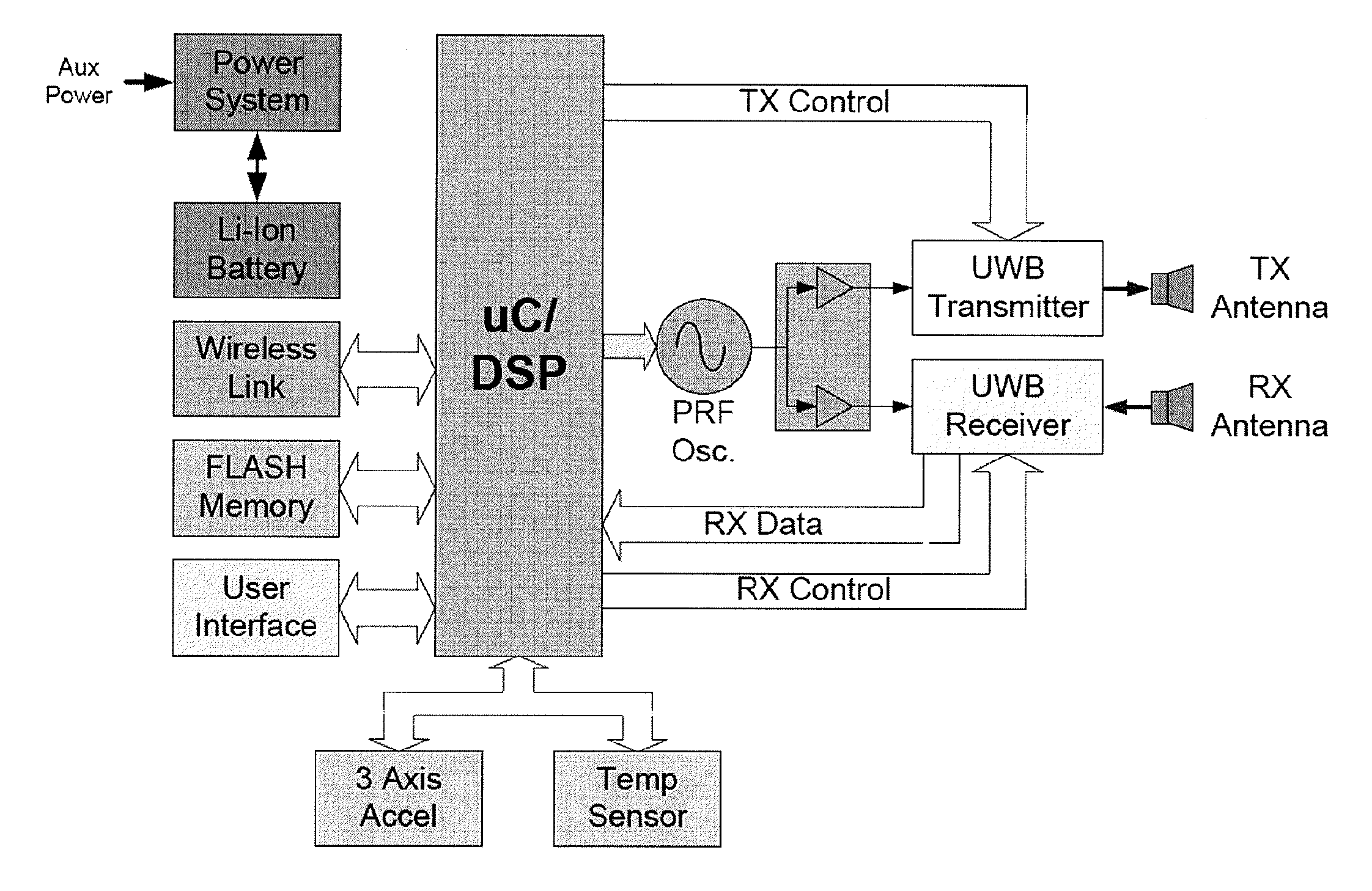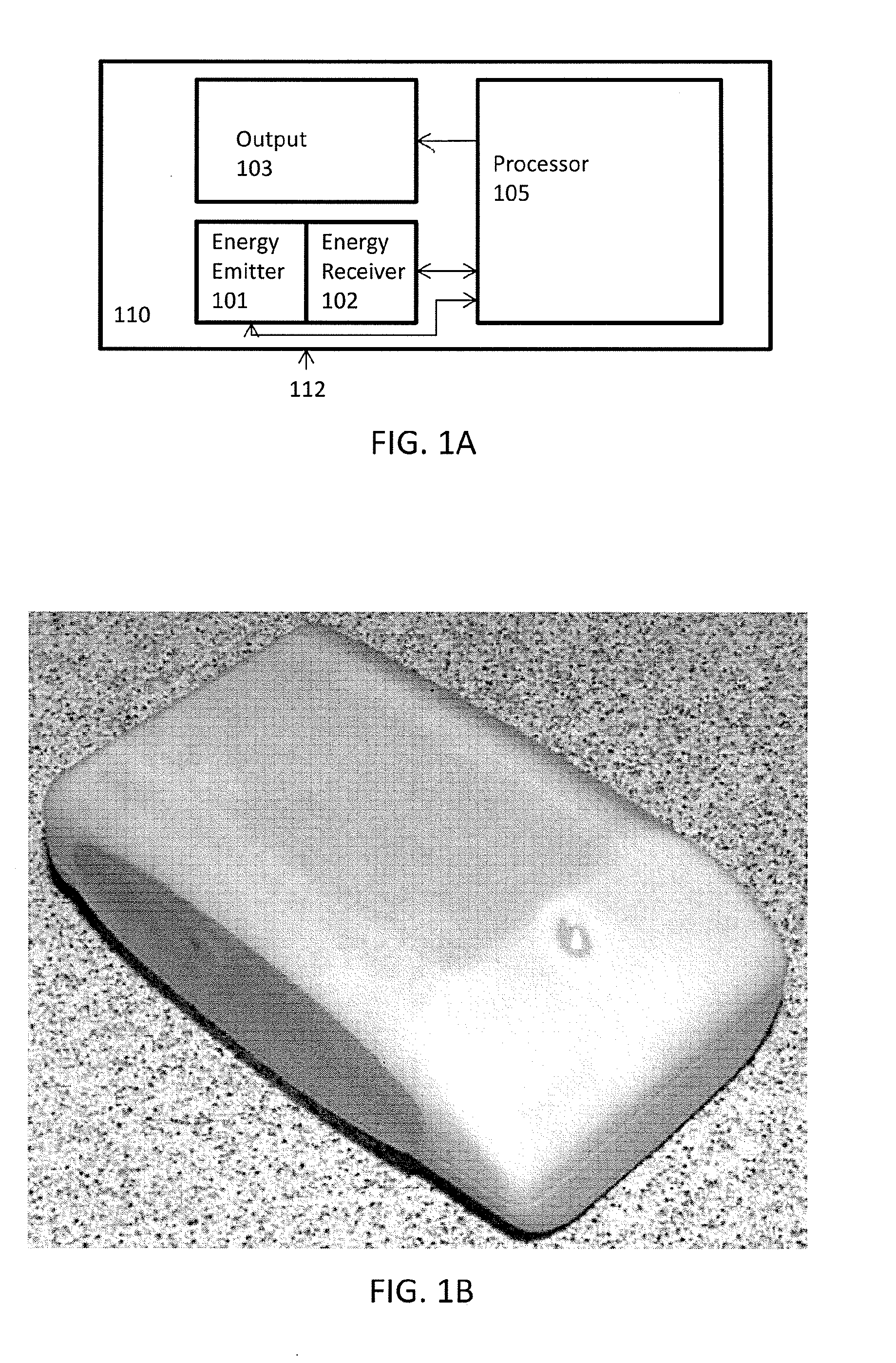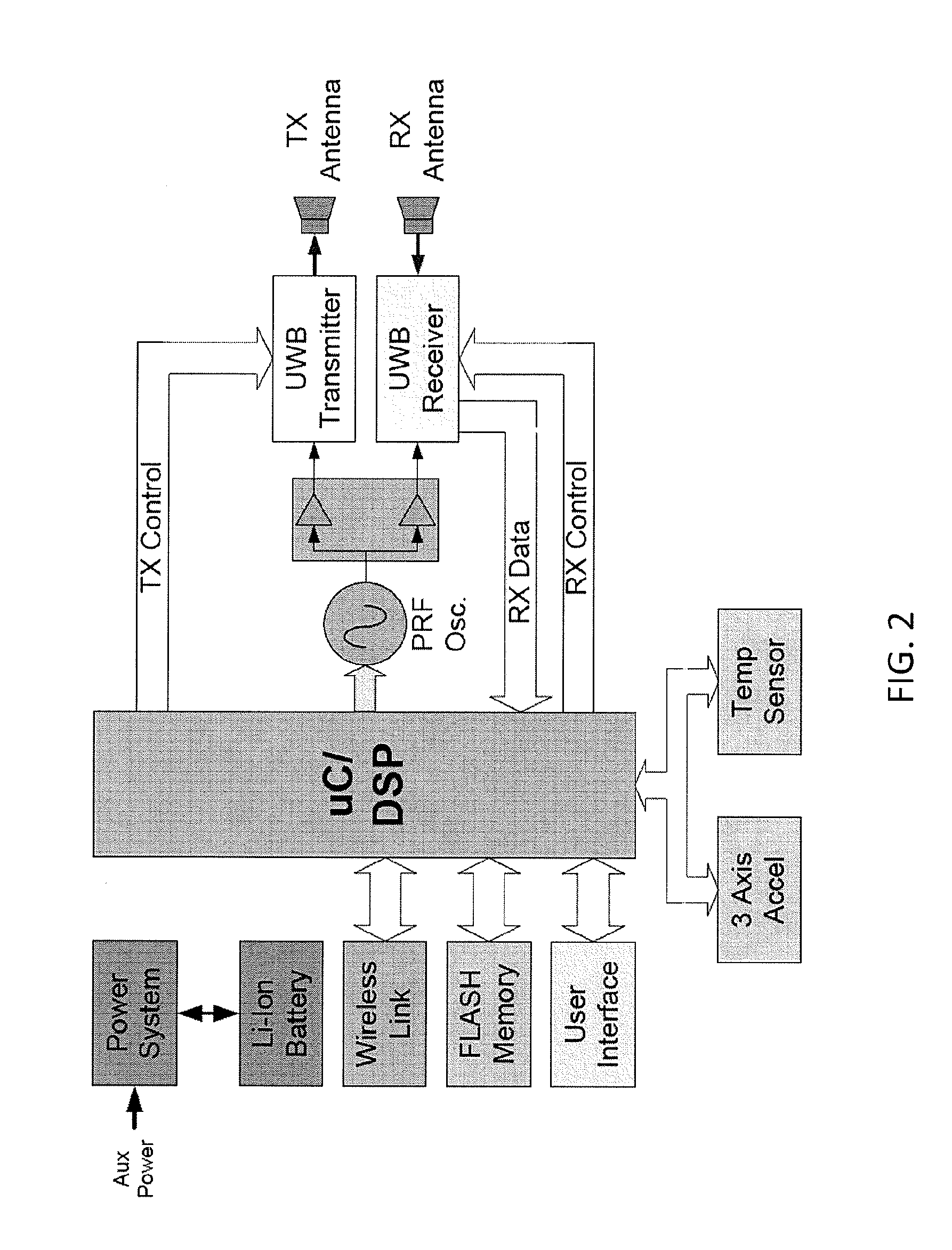Medical radar system for guiding cardiac resuscitation
a radar system and cardiac resuscitation technology, applied in the direction of artificial respiration, heart stimulation, therapy, etc., can solve the problems of inability to quickly assess the effect of cpr, inability to perform cpr, and inability to accurately estimate the effect of cardiac resuscitation,
- Summary
- Abstract
- Description
- Claims
- Application Information
AI Technical Summary
Benefits of technology
Problems solved by technology
Method used
Image
Examples
Embodiment Construction
[0043]A medical radar system may be used to enhance the efficacy of delivery of cardiopulmonary resuscitation (CPR). In particular, the devices and methods described in detail below refer to ultra-wideband (UWB) medical radar systems, however, it should be understood that these principles may be applied to other medical radar systems, including ultrasound systems.
[0044]UWB radio frequency (RF) radar is an active imaging technology similar in functional concept to ultrasound but is based on electromagnetic, rather than sonic energy. In practice, a UWB Medical Radar may emit a micro-pulse of electromagnetic energy, which propagates into the human body. As the energy enters the body, small amounts of the incident energy are reflected back to the device. The reflections are primarily a result of the differences in dielectric properties of the underlying tissues and organs. The reflected energy is received and processed using signal processing algorithms to extract information on the typ...
PUM
 Login to View More
Login to View More Abstract
Description
Claims
Application Information
 Login to View More
Login to View More - R&D
- Intellectual Property
- Life Sciences
- Materials
- Tech Scout
- Unparalleled Data Quality
- Higher Quality Content
- 60% Fewer Hallucinations
Browse by: Latest US Patents, China's latest patents, Technical Efficacy Thesaurus, Application Domain, Technology Topic, Popular Technical Reports.
© 2025 PatSnap. All rights reserved.Legal|Privacy policy|Modern Slavery Act Transparency Statement|Sitemap|About US| Contact US: help@patsnap.com



